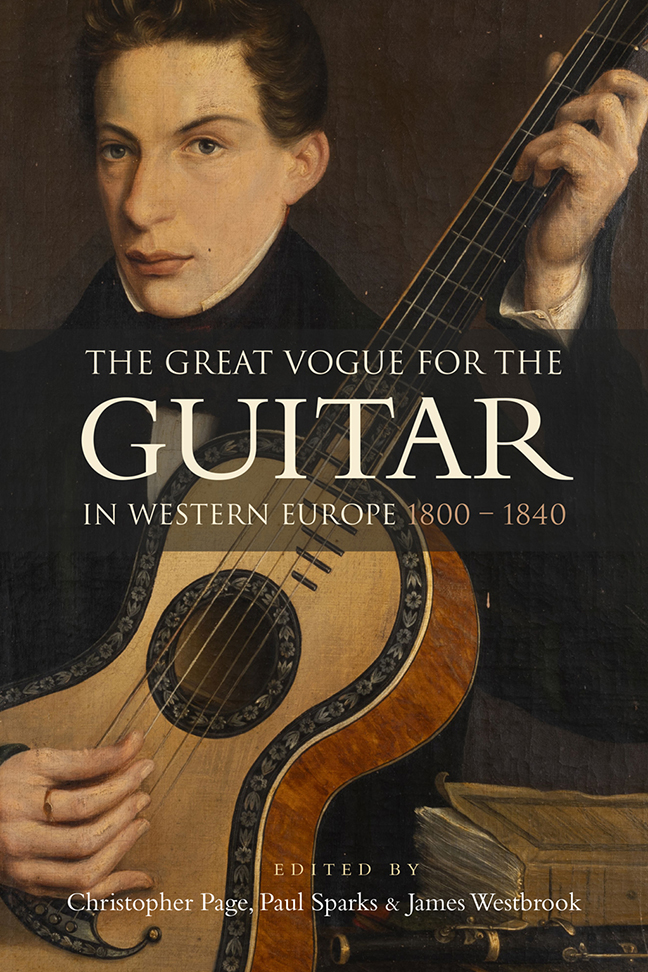Book contents
- Frontmatter
- Dedication
- Contents
- List of Illustrations
- Music examples
- The editors and the contributors
- Foreword
- Acknowledgements
- List of Abbreviations
- Introduction: The Great Vogue for the guitar
- I Contexts
- II The repertoire and its composers
- Appendix: A note on string-making
- Glossary of guitar terms
- Select Bibliography
- Index
Introduction: The Great Vogue for the guitar
Published online by Cambridge University Press: 10 January 2024
- Frontmatter
- Dedication
- Contents
- List of Illustrations
- Music examples
- The editors and the contributors
- Foreword
- Acknowledgements
- List of Abbreviations
- Introduction: The Great Vogue for the guitar
- I Contexts
- II The repertoire and its composers
- Appendix: A note on string-making
- Glossary of guitar terms
- Select Bibliography
- Index
Summary
This book is devoted to a musical fashion that arose during the age of Beethoven and Rossini but is now generally forgotten. In 1828, Charles de Marescot called it a Guitaromanie or ‘guitar-mania’. Well into the 1880s, there were those who remembered, with a certain excess of enthusiasm, that a ‘perfect craze’ for the guitar had threatened ‘to drive the pianoforte from the field’ several generations earlier. We propose to call this development, which touched most of Western Europe, the ‘Great Vogue’ for the guitar. Although that is a more temperate expression than the one chosen by Marescot, the capitalised initials in ‘Great Vogue’ make it just as emphatic, and throughout this book it will be used to imply the same unprecedented enthusiasm for the guitar that Marescot observed in 1828. The fervour involved could not be indefinitely sustained and was, indeed, inherently transitory, as anything that can reasonably be called a ‘vogue’ must be. By the 1830s, the Great Vogue for the guitar was losing momentum in all cities where it was not in decline or already over, though at no point thereafter did the instrument simply fade away. As late as 1837, for example, there were still more than forty professional teachers of the instrument in Paris, though this book will provide reasons to suppose that their business was less profitable than it had been in the recent past.
Substantial traces of the Great Vogue for the guitar remain, dispersed in libraries and museums throughout the world, and yet it is almost always overlooked in surveys of nineteenth-century music. The first illustration in the landmark account by Carl Dahlhaus, which still commands attention, is a sketch from 1807 showing a trio of guitar, flute and violin, but there is little else in the book to explain why Carl Maria von Weber, Hector Berlioz and Niccolo Paganini all played the guitar. Nor do we learn why a substantial body of repertoire was created for the guitar as a solo instrument, as a participant in chamber ensembles (of the kind Dahlhaus discusses) and as a means to accompany the voice.
- Type
- Chapter
- Information
- The Great Vogue for the Guitar in Western Europe1800-1840, pp. 1 - 10Publisher: Boydell & BrewerPrint publication year: 2023



